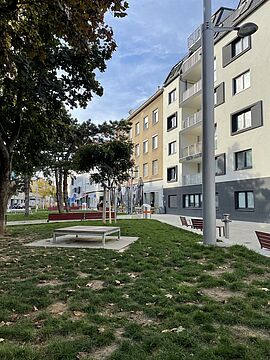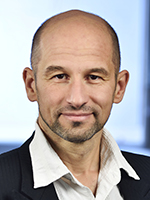Promoting climate-neutral mobility through digitally supported scenarios of gender-appropriate public open urban spaces
Initial situation and problems
In view of growing threats posed by the effects of climate change on cities, politicians and administrators are increasingly called upon to create environmentally and climate-friendly framework conditions in urban areas. Public space plays a central role in this, as its usability for different social groups has - among other things - a significant influence on mobility habits. Due to the limited availability of public spaces in the urban environment, conflicts of use often arise as a result of different and sometimes contradictory needs, in which more vulnerable groups (especially groups where females are more affected, e.g. older people, parents with children) often give way to more dominant groups (e.g. young men).
Projektübersicht DraussenDaheim ©DDH
In the course of the Covid-19 pandemic, it became clear how important the usability of green and open spaces in the residential environment is for all social groups. It is therefore necessary to design public urban spaces in such a way that they become more accessible to more vulnerable groups, invite more active mobility and reduce the need for extended "field trips" to the countryside. The use of innovative digital approaches opens up new possibilities for evaluating urban open spaces, developing them in a participatory manner and achieving gender-equitable design in the planning process and use.
Aim of the project
Based on the analysis of utilisation cycles of urban spaces and a survey of specific spatio-temporal utilisation patterns and needs of different social groups is the aim of the project to develop a methodology that supports the design of gender-equitable open spaces in order to make them accessible to more vulnerable groups without displacing other groups at the same time. In this way, all groups can also feel "at home outside" in their immediate neighbourhood. In this context, dynamically adaptive usage options and accessibility analyses over the course of the day and week are being elicited and possibilities of digitally supported communication of usage wishes and rights between social groups are being investigated. The pro-vision of such possibilities can not only contribute to a fairer balance in the use of land, but also increase the acceptance of the respective needs of the different groups.
Expected project results
As a result of the project, a new methodology based on a digitally supported analysis and visualisation of results with accompanying recommendations is designed, which can be used e.g. by area managers, urban planning and public developers for the redesign of gender-appropriate open spaces as well as for the gender-appropriate organisation of the use of existing open space use, and which enables an estimation of the achievable climate contribution through changed mobility behaviour. Furthermore, recommendations for action for the city regarding the provision of infrastructure as well as business models, considering citizen participation concepts for open space design, are to be examined.
Based on key characteristics of gender-specific spatial qualities from the literature and digitally supported survey of milieu-specific behaviour patterns, spatio-temporal utilisation concepts will be identified with the help of simulations and accessibility analyses will be carried out, which will then be concretised in a co-creation process with the population. In addition, innovative communication possibilities between those affected (e.g. VR/AR visualisations) will be developed and evaluated, enabling citizens to dynamically negotiate and organise the use of space in the future.
Project consortium
Funding
This project is funded by the BMK. www.ffg.at
![[Translate to English:] Integrated Digital Urban Planning Symbolfoto: Das AIT ist Österreichs größte außeruniversitäre Forschungseinrichtung](/fileadmin/_processed_/f/d/csm_Stadt-Hologramm_b14390cd9b.jpg)



